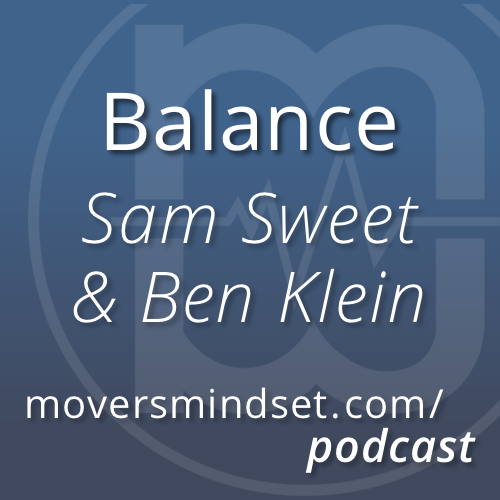
What unique insights and experiences do practitioners of partner acrobatics and group acrobatics share about their journey, techniques, and community-building?
“Partner acrobatics is a very deep discipline where you can get into very, very advanced poses that take a long time. […] I’d say it’s got a very friendly start to the learning curve. And then it gets harder from there.” ~ Ben Klein (2:11)
Partner acrobatics offers a unique blend of trust, technique, and teamwork rarely found in solo practices.
“The mental game of acrobatics, partner acrobatics specifically, is something that I struggle with because I had a stronger… solo practice when I was younger.” ~ Sam Sweet (6:17)
The conversation explores the unique aspects of partner and group acrobatics. The discussion highlights the discipline’s friendly learning curve, allowing beginners to perform seemingly advanced maneuvers quickly. Sam and Ben emphasize the mental challenges, such as overcoming fear and adapting to being upside down or off-balance. The dynamics of partnership require trust, communication, and synchronization between participants.
Another major theme is the difference between solo and group movement practices. Group acrobatics introduces challenges of collaboration and safety, especially when multiple participants form complex structures. Ben and Sam also describe the cultural and community aspects of acrobatics, showcasing the blend of creativity, interpersonal skills, and physical strength required in these practices.
Takeaways
Trust and communication — essential for both partner and group acrobatics.
Learning curve — beginners can quickly progress to advanced-looking movements.
Mental challenges — balancing requires overcoming fear and adapting to new orientations.
Dynamic relationships — each participant’s role in acrobatics shifts based on the trick.
Collaboration in groups — adds complexity to movements and communication.
Acrobatic diversity — encompasses elements of dance, yoga, and solo hand balancing.
Cultural aspects — fosters a close-knit, supportive community.
Interpersonal skills — crucial for successful partnerships in movement.
Resources
Cosmic Fit Club — a hub for movement practice and aerial training.
Move NYC Event — a movement-focused event with sessions in acrobatics and parkour, organized by The Movement Creative.
Cosmic Fit Club @cosmicfitclub — updates and insights into acrobatics and classes.
(Written with help from Chat-GPT.)
— Hello👋 I’m Craig Constantine.
In the Movers Mindset podcast, I talk with movement enthusiasts to learn who they are, what they do, and why they do it. I’m interested in the nature and philosophy of movement and in exploring themes like independence, self-direction, and human excellence. My interests color each conversation and provide some structure to Movers Mindset. But since I like to take the scenic route, every conversation ends up going somewhere unique.
The purpose of Movers Mindset is to create and share great conversations with movement enthusiasts. Each conversation feeds my insatiable curiosity, but I share them to turn on a light for someone else, to inspire them, or to give them their next question.
I appreciate your time and attention, and I don’t take it for granted.
— Thank you!
Want more? Subscribe to the email list for weekly updates—new episodes and archive highlights delivered to your inbox.
I invite you to cultivate a meaningful life—through presence, not pursuit. You can learn more about me and all my projects at, https://craigconstantine.com.
If you like what I’m doing through Movers Mindset, learn more about becoming a patron.
ɕ
